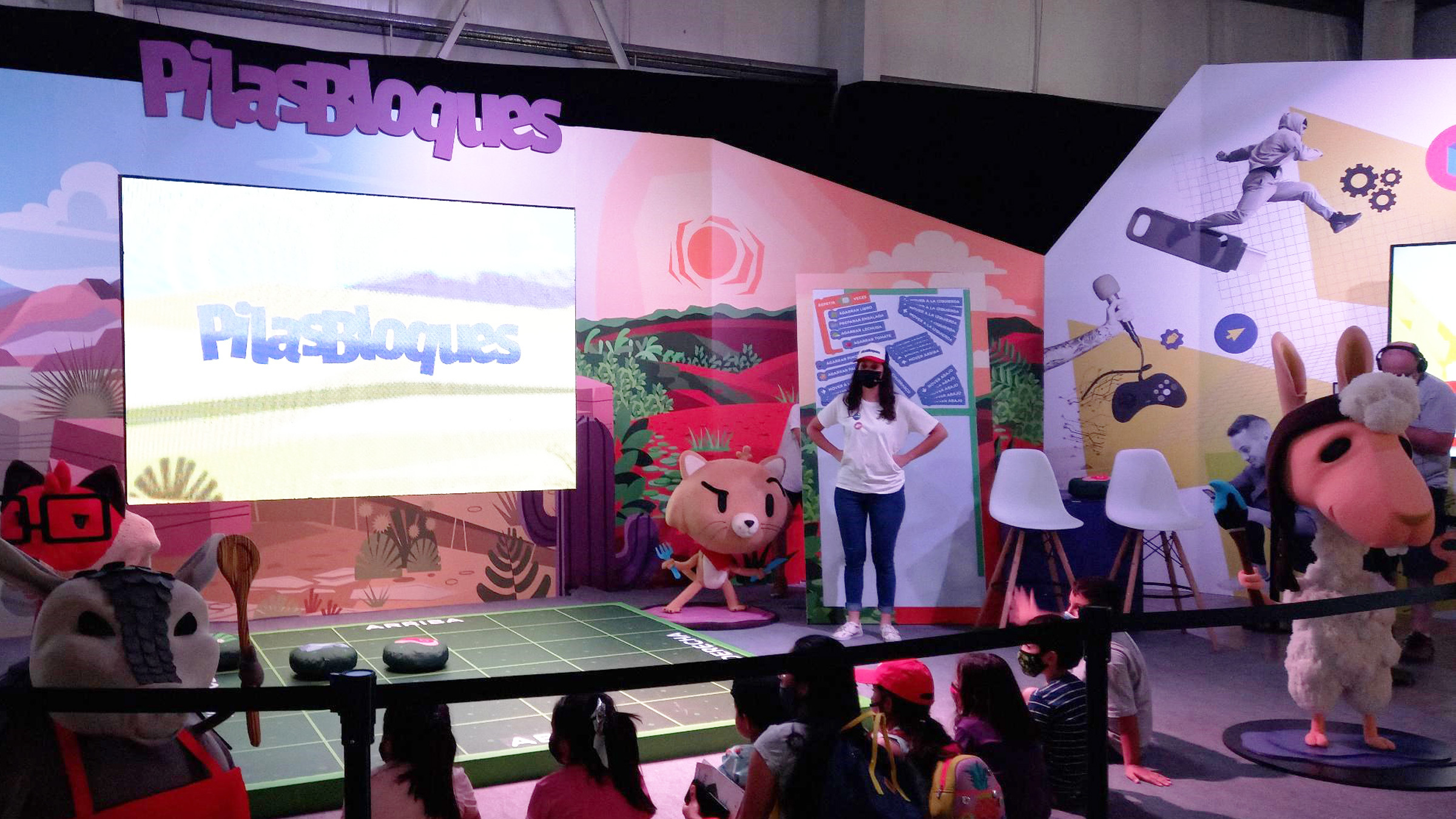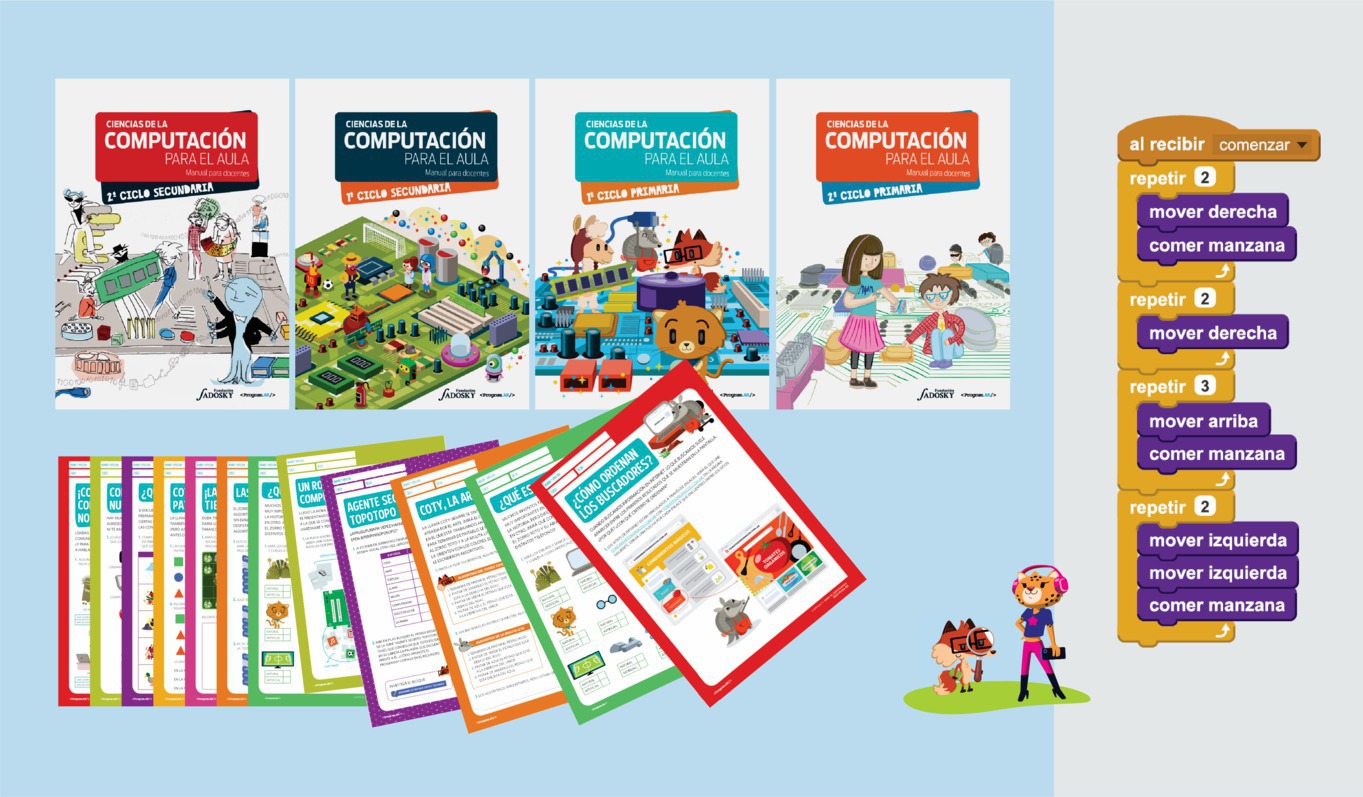In the last decade, the widespread advances in computer science and its growing presence into the organization of everyday life have established a strong interest in its inclusion in the school curriculum. The recent mass dissemination of generative artificial intelligence (AI) tools has only strengthened this interest worldwide. In Latin America, for example, the Omar Dengo Foundation and the Ministry of Education in Costa Rica have led the design and implementation of the National Computing Program in schools. Other countries, such as Uruguay or Chile, are taking steps forward through different initiatives.4
In Argentina, a public ICT institution called the Sadosky Foundationa launched the Program.AR Initiative in 2013 and has since developed a comprehensive policy for the inclusion of computer science in the formal schooling system of Argentina.
In Argentina, schools, curriculum design, teacher training, and the selection of education professionals are the responsibility of 24 provincial governments. National education policy decisions, however, are made collegially through the Federal Council of Education in which all provinces and the national government are represented.
To overcome the difficulties of such a distributed educational system, as well as the changes in educational policy due to alternation in government, a networking strategy involving public universities and other local institutions was put in place to develop teaching material and to provide for both initial training and professional development for computer science teachers countrywide. Throughout its 10 years of existence, the Program.AR Initiative has woven a network of more than 60 academic institutions spread over more than two million square kilometers.
Working in such a vast and heterogeneous country requires tackling several challenges simultaneously.
In-Service and Initial Teacher Training
More than 5,000 practicing teachers and school principals’ countrywide have been trained by Program.AR through professional development courses in computer science.b
This availability of trained teachers has allowed many provinces to start implementing computer science courses in both primary and secondary schools. It also enabled the Sadosky Foundation to become the computational thinking strategic partner for Uruguay’s national digital education hub, Ceibal.c This alliance involves the design and weekly delivery of synchronous virtual classes to more than 30,000 primary school students.d
The Sadosky Foundation also designed the first teacher training college oriented toward the didactics of computer science that is neither a traditional technical degree (like software engineering) nor a traditional computer science teacher training course, which in Argentina are mainly oriented toward word processors and spreadsheets. In this new offering, the core subject is programming, but knowledge of technological infrastructure (such as operating systems or computer networks), data science, and AI are also covered. One third of the total hours is devoted to general pedagogical training, and the other two thirds are divided between content knowledge and pedagogical content knowledge, handled in an intertwined manner. In contrast to technical courses with a didactic complement, the core subjects are approached with reflections and references to their treatment in school.
Graduates are expected to have a sufficient knowledge of computer science to enable them to teach classes with ease, as well as develop the necessary teaching materials. This is especially relevant because there are not many school-appropriate educational materials available in Spanish, except on topics related to programming.
Generation of Culturally Appropriate Teaching Materials
To make up for the lack of culturally appropriate teaching materials in Spanish, and with a didactic approach adapted to each level, the initiative designed a digital tool for teaching programming (Pilas Bloquese) and four teacher workbooksf for computer science education that addresses programming, computer architecture, digital citizenship, computer networks, the Internet, and more.
The programming teaching tool Pilas Bloques is available in Spanish, English, and Portuguese, and features characters that represent people of different genders, as well as the fauna and flora of Argentina. It was specially designed for children between 5–12 years old, to be used in schools with or without Internet access. Understanding the social representations that keep women and diversities away from digital and computer technology start at an early age, the tool has an emphasis on gender-diverse characters. According to a recent UNESCO report,12 the digital divide and the gender gap feed off each other in a vicious way. This is why schools and teachers can play a key role in mitigating this problem if they have the appropriate pedagogical resources, equipment, and infrastructure to do so.
It is important to note this tool does not replace other education devices such as Scratch,6 which are more appropriate for open projects. Pilas Bloques complements such tools, allowing students to engage in challenge-oriented exercises, with specific goals to achieve, to work intensively on certain topics (for example, cycles or conditionals) facing incremental complexity in carefully defined environments. It also has a feedback system that invites exploration and the discussion of different solution strategies for any given challenge.
An innovative feature,g recently launched, allows for the creation of new challenges by defining the task to be solved, selecting the scenario in which the action takes place, and choosing the characters and the commands that will be available for users to solve the challenge. This innovation can be used didactically for multiple purposes (developing new skills, designing learning assessments), expanding the usefulness of the tool.
Besides the programming tool, four teacher workbooks1,2,5,8 were developed, each for different age ranges, covering both primary and secondary schooling. They include didactic sequences with step-by-step explanations of the activities to be performed and worksheets for the students. They were specially designed so teachers who do not have a such a solid background in computer science can understand the content knowledge proposed. They all share a didactic approach aimed at arousing students’ interest and curiosity.
The four books are licensed under Creative Commons, are free to download, and are already being used in Argentina, Uruguay, Paraguay, Colombia, Costa Rica, and Mexico. They will soon be translated into Portuguese to be used in Brazil.
Technical assistance to governments. Taking into account the difficulties revealed by the UNESCO/IFIP TC3 Meeting Report11 regarding the inclusion of computer science content knowledge in different educational systems around the world, a course was designed for educational government officials. Its purpose is to address the experiences of different countries in relation to the same challenge, clarify epistemological aspects related to digital and computer literacy, discuss various possible approaches for its implementation in schools, and set out a roadmap for a possible implementation of a computer science school innovation strategy. As part of this effort, the Sadosky Foundation offers support to carry out the necessary curricular adaptationsh for different educational levels and for teacher training when needed. As a result of this strategy, seven of the 24 provinces of Argentina have advanced or are advancing in its implementation.
Program evaluation, research, and impact. A continuous evaluation policy was established for the program. For example, teacher training was assessed in 2018 by a third party, with around 1,500 teachers involved in such assessments.10 It showed the courses were highly valued by teachers, even the ones who do not teach subjects related to computing, technology, or programming.
In 2020, the teacher workbooks were also assessed through surveys, focus groups, and class observations.9 Some of the findings of the assessment include that the workbooks solved an important problem for teachers in terms of proper teaching material in Spanish, facilitated the inclusion of content for lesser-trained teachers, and that the workbooks were adaptable to different contexts (although many users of the collection taught subjects related to computing or ICT in secondary schools, there were also many users for other curricular subjects). As was mentioned earlier, many Argentine provinces and Latin American countries are using the workbooks.
Recently, the Development Bank of Latin America and the Caribbean—CAF—published a book on the program, emphasizing the context of its emergence, the lessons learned, the deployment of its action lines, and the results achieved.3
Besides suggesting improvements for the ongoing policies, the outcome of these assessments also triggered field research to address more profound questions. Two examples of such a process are a recent study on university trajectories in computer science careers in Argentina, which shows the expansion and current challenges of the sector,7 and a comparative analysis of educational programs in computer science in Latin America.8
Since 2018, national meetings have been organized annually to foster community building, bringing together more than 2,000 researchers, teachers, and teachers-in-training. Information about the most recent event is available at https://jadicc2023.program.ar/.





Join the Discussion (0)
Become a Member or Sign In to Post a Comment